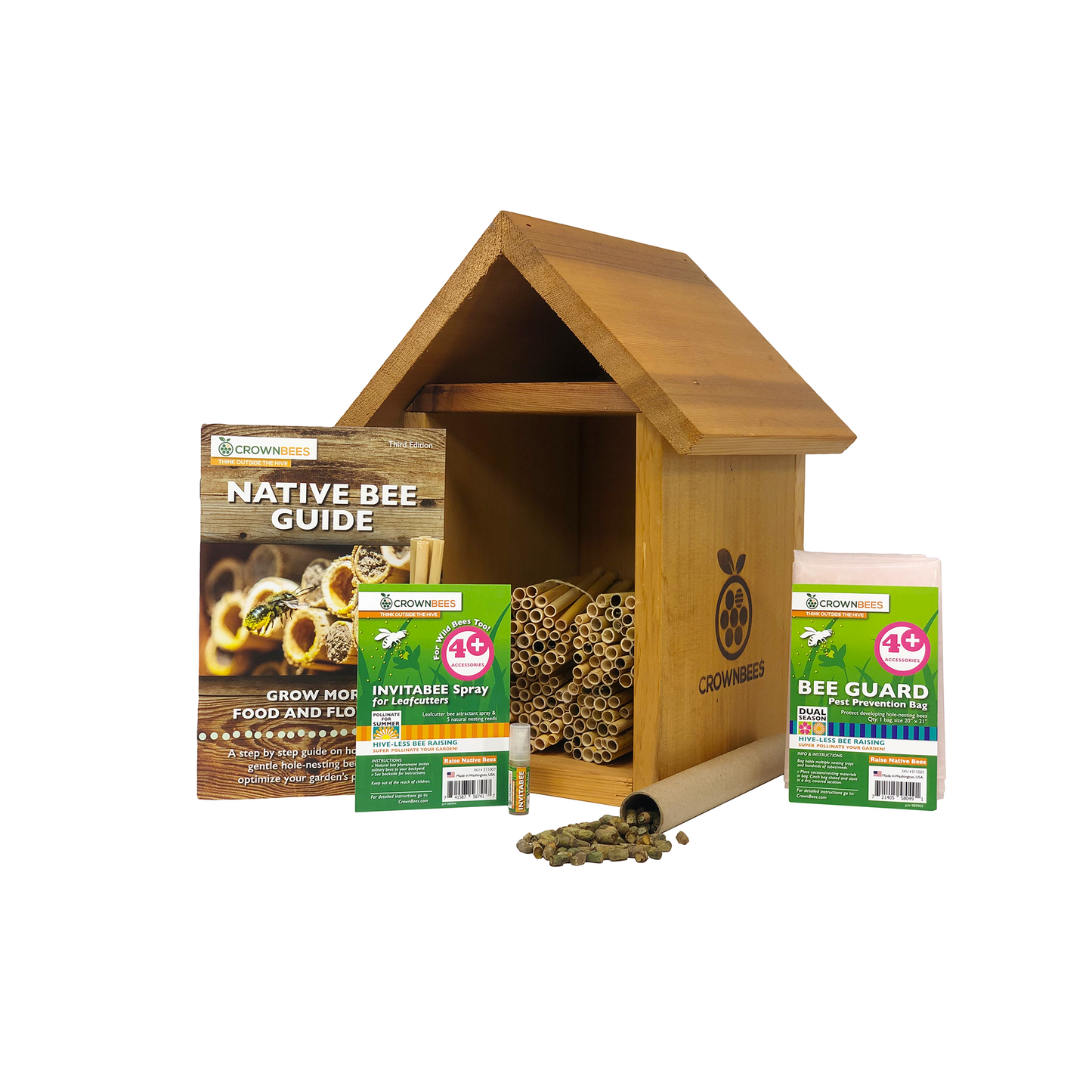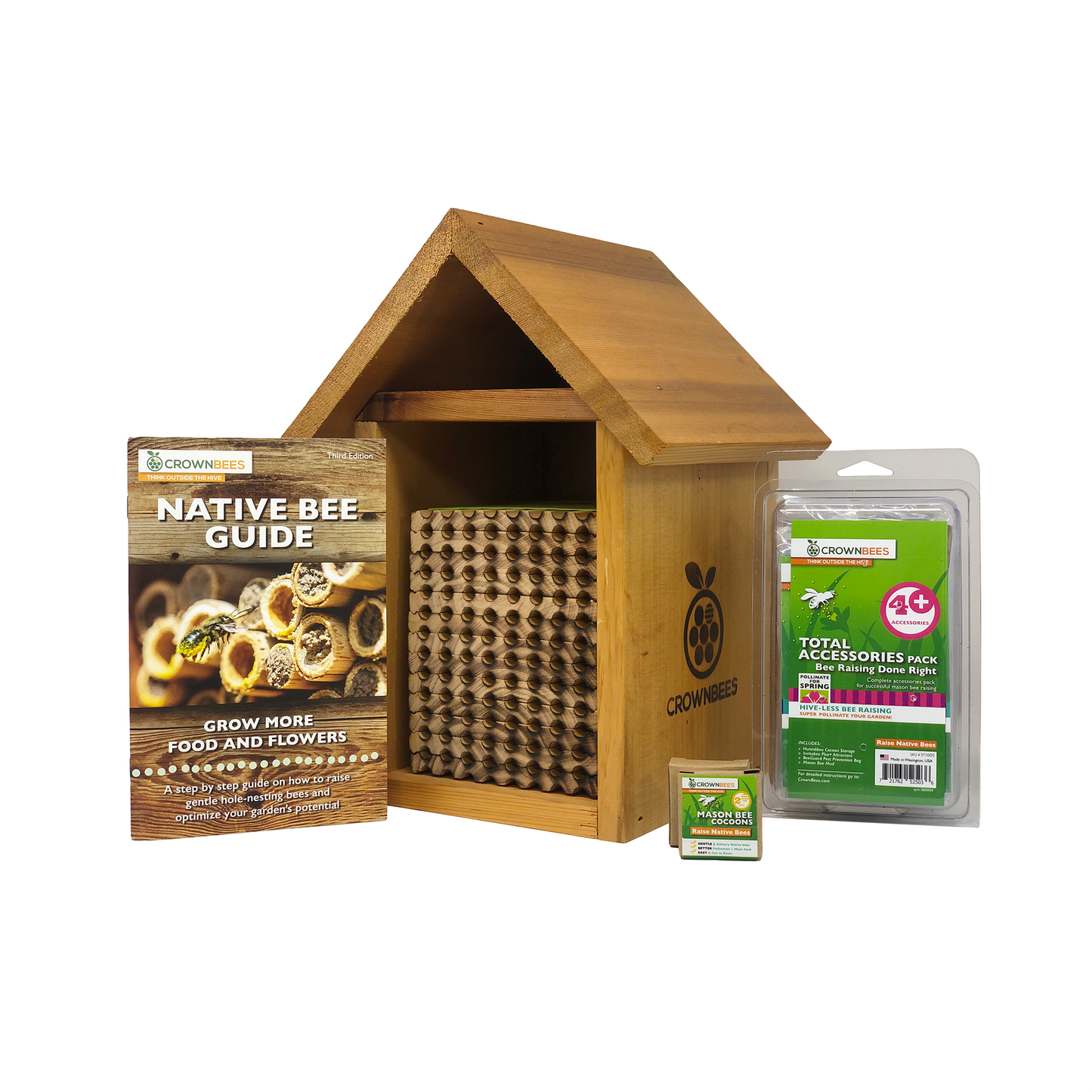
Many bee raisers want to learn how to identify the bees that visit their yards and gardens. But, with over 4,000 species of native bees in North America, plus the non-native species that have been introduced, it can be challenging to identify bees down to the species level.
Even if we look only at mason bees, the task can be daunting! About 139 species of mason bee are native to North America, or 41% of the global diversity of the group, plus an additional three species (Osmia cornifrons and O. taurus from Asia and O. caerulescens from Europe) that have been established in North America.
While we might not be able to identify down to species level, there are some common characteristics that the genus Osmia (mason bees) share that can help you pick out the mason bees from the other insect pollinators in your yard and garden.
Keep in mind that the following characteristics are general and slight variations between mason bee species are common. For example, Osmia lignaria and Osmia cornifrons use mud to construct their nests, while Osmia californica use chewed-up leaf pulp, mud, and pollen to construct their nests.
Common Characteristics of North American Mason Bees
- Most North American species are metallic blue, black, or green in color, although other color variations exist.
- Most North American species are around 7-15 millimeters long; male bees are noticeably smaller than females.
- Mason bees have large scissor-like jaws to gather mud, pulp and leaves to construct nests.
- All female mason bees have parallel rows of pollen-collecting hairs, called the scopa, on the underside of their abdomen. Only female mason bees have a scopa - males do not help transport pollen back to the nest and do not need these specialized hairs.
- Despite having a stinger, female mason bees are not aggressive and rarely sting, even when handled. The sting is also much less painful than that of a honey bee. As a result, beekeepers do not need any special protective equipment when working with mason bees. Male mason bees do not have a stinger!

At Crown Bees, we work with the two most commonly managed species of mason bee, the Blue Orchard Bee and the Japanese Orchard Bee (AKA Hornfaced Bee). Both species are highly efficient spring pollinators and are alike in the types of crops they pollinate and how they construct their nests. The specific species of Mason Bee that you will receive from us is dependent on your location.
Below is a bit more species-specific identification information on the Blue Orchard Mason Bee, the Japanese Orchard Mason Bee, the European Orchard, and Red Mason Bees, along with a list of helpful identification tools for those who'd like to dive deeper into identifying their local pollinators.
Blue Orchard Mason Bee, Osmia lignaria
The female is ~14 mm in length. Her metallic bluish-grey color may sometimes appear black, and her body is covered in hair, which collects pollen while she is foraging for pollen and nectar. When flying, the blue orchard mason bee is often mistaken for a black fly. As with other mason bees, the female collects pollen on her scopa to bring back to her nest.
The male is noticeably small, ~ 11 mm long. He can easily be distinguished from a female by his long antennae and a light-colored hair tuft on his head. Males are similar in color to females; however, he lacks scopal hairs.

Japanese Orchard Bee (AKA Hornfaced Bee), Osmia cornifrons
Japanese Orchard Bees are roughly the same size as Blue Orchard Bees, with black bodies covered in bronze hair. Females have two prominent horns on the front of their faces. A difference between the introduced Japanese Orchard Bee and the native Blue Orchard Bee is the Japanese Orchard Bee has orangish-brown scopal hairs, unlike the black or white hairs on the Blue Orchard Bee.

European Orchard Bee, Osmia cornuta & Red Mason Bee, Osmia bicornis
As mentioned earlier, there are many similar species of mason bees across the globe, in both appearance and behavior, making it difficult to identify species by eye.
The European Orchard Bee and the Red Mason Bee often pop up when you do a broad search for mason bees on the Internet. They are not native to the western hemisphere. However, they're widespread in England and Wales and can also be found in Scotland, Northern Africa, and the Middle East.
If you live in the Americas, you won't find the Red Mason Bee bee in your backyard, but you might spot the European Orchard Bee. The European Orchard Bee was introduced as a pollinator of fruit trees in California in the '80s. However, unlike the Japanese Orchard Bee, its establishment has not been documented.
Studies on these Eastern Hemisphere mason bees have provided valuable insights to researchers studying mason bees in North America.
Both species are covered in dense gingery hair; the males are smaller than the females and sport a white tuft of hair on their faces. Their mating and nesting behavior is similar to the Blue Orchard Mason Bee and the Japanese Orchard Bee.


Helpful Identification Tools
If you'd like to dive deeper into identifying the bees in your yard, here are some great resources to help you along the way.
- Crown Bees has a great selection of books and bee identification guides to help you learn the bees in your backyard!
- Discover Life is a free online tool to help identify species, track the impact of climate change, and participate in research projects.
- Bug Guide is an online community of naturalists who collect photos of insects from the United States and Canada for identification and research. They also summarize findings in guide pages for each order, family, genus, and species.
- Exotic Bee ID, a website created through a collaborative effort between the U.S. Department of Agriculture's Agricultural Research Service (ARS) and Animal and Plant Health Inspection Service (APHIS) and Utah State University (USU) can help bee enthusiasts identify non-native bees in the United States. Some exotics, such as Osmia cornifrons, have been naturalized and commonly pollinate farms and orchards. However, it is still crucial for researchers to understand their distribution and abundance.
Exotic Bee ID is designed primarily as a screening tool for those who monitor and intercept non-native bees coming into this country, such as people working at ports of entry, state agriculture departments, and university extension services. However, it is also set up to be used by growers, hobbyists, and homeowners—that is, essentially anyone interested in identifying bees. Access to the website is free.


